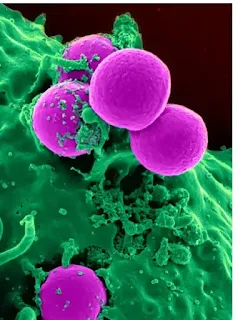What is Vaginal Discharge and what are the things to know about it?
The vagina is awesomely designed in such a way that it does not require any outside assistance to smooth and clean itself. You may wonder what is the sticky substance down there, even when you are not even on your period.
Using vaginal fluids, the vagina cleans itself. The vagina harbors a variety of healthy strains of bacteria named Lactobacillus.
This prevents the intrusion of different microorganisms into the vagina. Vaginal discharges are ordinary. A vaginal discharge is transparent, watery ,milky white, thick fluid which feels sticky to touch and contains no odor and does not cause any kind of itch.
It is launched in small quantities. It is also known as Leucorhoea.
Vaginal discharges are fluid substances that are produced by the glands inside the the cervix and vagina.
Vaginal discharges consists of vaginal bacteria and dead cells. It does the job of keeping the vagina clean, moist, maintains PH, and acts as a lubricant to protect the vagina against all kinds of infections.
The discharge is the result of a healthier vagina and having vaginal discharges is absolutely,
Everyone has them, it is not something embarrassing that occurs only to you, on this planet.
Vaginal discharges is the reason why our panties get bleached. It is because of the PH value of the vagina, which is fluid, which is acidic in nature.
The vagina cleanses itself.
Vaginal discharges differ from woman to woman. This is due to various factors such as age, the day of your menstrual cycle, pregnancy, sexual activities, breast feeding your child, or having birth control pills.
The problems of the vagina can be identified by examining the odor and the type of discharge discharged by vagina.
There are a few common and basic forms of vaginal discharges that you must be conscious of. In this article, we list the most common vaginal discharges women experience, according to their ages.
The most common types of vaginal discharges are red, pink, brown, green, yellow and grey.
The types of vaginal discharges are :
Red Discharge: A red discharge indicates that your length is ready to start or end. If the crimson discharge is noticed while you do not have your periods, it might indicate that you may be suffering from a complication inside your body, so you should
Brown Discharge: Brown discharge refers to blood combined with vaginal discharge. It could be a very not unusual place to identify brown discharge on the early stages when your durations are close to end. Brown discharge would possibly let you know that something isn't always right down there, it can imply a cancerous boom. Blood-stained discharge suggests the same indication. If you discover a brown discharge inside of a monthly cycle, you should immediately talk to your gynecologist and tell them about the atypical discharge.
Green, Yellow and Blue Discharge: Gynecologists say that discharge appears green or yellow it indicates you are inflamed with the aid of contamination. Sometimes it's blue discharge too. You are inflamed with the aid of using having a sexual relationship that inflamed you've got a sexually transmitted contamination. Chlamydia and gonorrhea-inflamed sufferers have yellowish and greenish discharges. Cloudy yellowish discharge with the ache while urinating suggests the indication of Gonorrhea infection.
Gray Discharge: Gray discharge is considered a trademark of a vaginal condition resulting from an awful bacterial growth in the vagina. The condition is known as bacterial vaginosis. The discharge has a fishy scent, which can be detected by itching. The discomfort is the result of an insufficient quantity of lactobacilli that help maintain PH balance in the vagina.
Pink Discharge: Pink discharge could be an illustration or result of implantation bleeding, cervical bleeding, and vaginal irritation. Sometimes pink discharge is spotted when the period is about to start. Pink discharge from your vagina could be a sign of early pregnancy. From slightly pinkish to dark pink, the color could vary. You might need to take pregnancy tests.
Do seek advice from a gynecologist.
White Discharge: White discharge is not unusual in most cases. When discharges are more intense than normal, they may indicate a healthy vagina, pregnancy, or hormonal imbalance. An odorless vaginal discharge and a milky white discharge are signs of a healthy vagina. It's considered to be completely natural and normal.
Yellow Discharge: Now that is an atypical one, yellow discharges can indicate both a sexually transmitted infection or yeast infection. Mostly yeast infections are associated with vaginal discharges of yellowish together with itchiness, ache, irritation, and swelling. Yellow discharge together with ache, itchiness, foul smell, and infection is resulting from trichomoniasis, a sexually transmitted contamination caused by a parasite called as trichomonas vaginitis, which is caused from having sexual intercourse with more than one partner, having unhygienic sex, unprotected sex ,sharing private such things as towels, and bathing soaps. This may be dealt with, with the aid of a gynecologist who provides good quality antibiotics and treatment.
Gray Discharge: Gray discharges are considered or taken into consideration as a trademark of a vaginal infection resulting from an awful bacterial growth in the vagina.
The condition is known as bacterial vaginosis. The discharge has a fishy scent, observed with the aid of itchiness.
Insufficient lactobacilli cause this discomfort. Lactobacilli maintain pH balance.
Many women around the world suffer from bacterial vaginosis, one of the most common vaginal health issues. It could be cured within a short span of time.
The gray discharge indicates Bacterial Vaginosis and this infection can be treated with appropriate medication and proper treatment provided by a qualified gynecologist.
All the information above mentioned is extracted from experts' guidance and advice.
Referencing is mentioned below.

